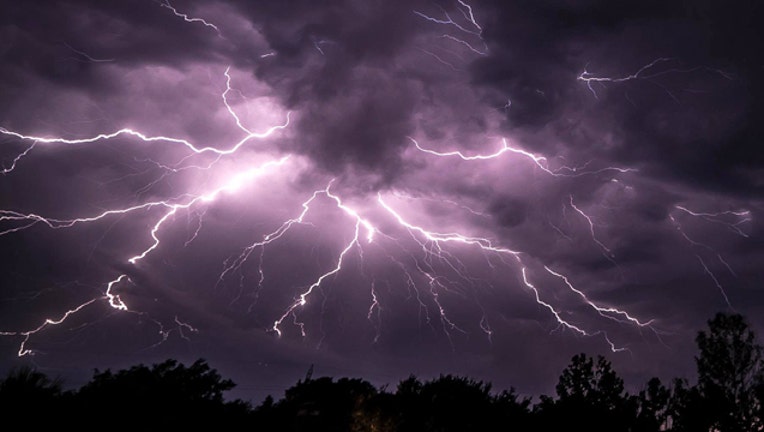Are you prepared for severe weather?

Photo of lightning over Marble Falls - 5/28/16 | (Image Credit: Clint Pohler)
Are you and your family prepared for severe weather? Do you know the difference between a Flash Flood Watch and a Warning?
FOX 7 has compiled the following information to help you remain safe during severe weather.
The Texas Department of Transportation is urging drivers to take extra precautions and follow the following tips.
- If water is covering a road, don’t try to cross. As little as six inches of water can float some vehicles.
- It is illegal to remove barricades blocking lower water crossings. Penalties can range from $200 to $1,000 and/or two years in jail.
- Never try to walk, swim or drive through swift water.
- If your vehicle stalls in deep water, leave it and move to higher ground if you can do so safely.
- Turn around; don’t drown.
- Always wear a seat belt and never drive under the influence of alcohol. In 2014, there were 37 fatalities on Texas roadways over the Memorial Day weekend. Ten victims were not wearing seat belts at the time of the crash and 15 were killed due to impaired drivers.
The Red Cross recommends that you have the following items packed and ready to go in case you need to evacuate your home in the event of a flood.
- 3 day supply of water, one gallon per person per day
- 3 day supply of non-perishable, easy to prepare food
- Flashlight
- Battery-powered or hand-crank radio
- Extra batteries
- First Aid kit
- Medications (7-day supply) and medical items (hearing aids with extra batteries, glasses, contact lenses, syringes, cane)
- Multi-purpose tool
- Sanitation and personal hygiene items
- Copies of personal documents (medication list and pertinent medical information, deed/lease to home, birth certificates, insurance policies)
- Cell phone with chargers
- Family and emergency contact information
- Extra cash
- Emergency blanket
- Map(s) of the area
- Baby supplies (bottles, formula, baby food, diapers)
- Pet supplies (collar, leash, ID, food, carrier, bowl)
- Tools/supplies for securing your home
- Extra set of car keys and house keys
- Extra clothing, hat and sturdy shoes
- Rain gear
- Insect repellent and sunscreen
- Camera for photos of damage
Let your family know your safe. If your community has experienced a disaster, register on the American Red Cross Safe and Well web site to let your family and friends know about your welfare. You may also call 1-866-GET-INFO to register yourself and your family. Follow flood recovery tips if you or your family have been effected by floodwaters.
- Return home only when officials have declared the area safe.
- Before entering your home, look outside for loose power lines, damaged gas lines, foundation cracks or other damage.
- Parts of your home may be collapsed or damaged. Approach entrances carefully. See if porch roofs and overhangs have all their supports.
- Watch out for wild animals, especially poisonous snakes that may have come into your home with the floodwater.
- If you smell natural or propane gas or hear a hissing noise, leave immediately and call the fire department.
- If power lines are down outside your home, do not step in puddles or standing water.
- Keep children and pets away from hazardous sites and floodwater.
- Materials such as cleaning products, paint, batteries, contaminated fuel and damaged fuel containers are hazardous. Check with local authorities for assistance with disposal to avoid risk.
- During cleanup, wear protective clothing, including rubber gloves and rubber boots.
- Make sure your food and water are safe. Discard items that have come in contact with floodwater, including canned goods, water bottles, plastic utensils and baby bottle nipples. When in doubt, throw it out!
- Contact your local or state public health department to see if your water supply might be contaminated. You may need to boil or treat it before use. Do not use water that could be contaminated to wash dishes, brush teeth, prepare food, wash hands, make ice or make baby formula!
(Tips and Guides appear courtesy the Texas Department of Transportation and The Red Cross.

